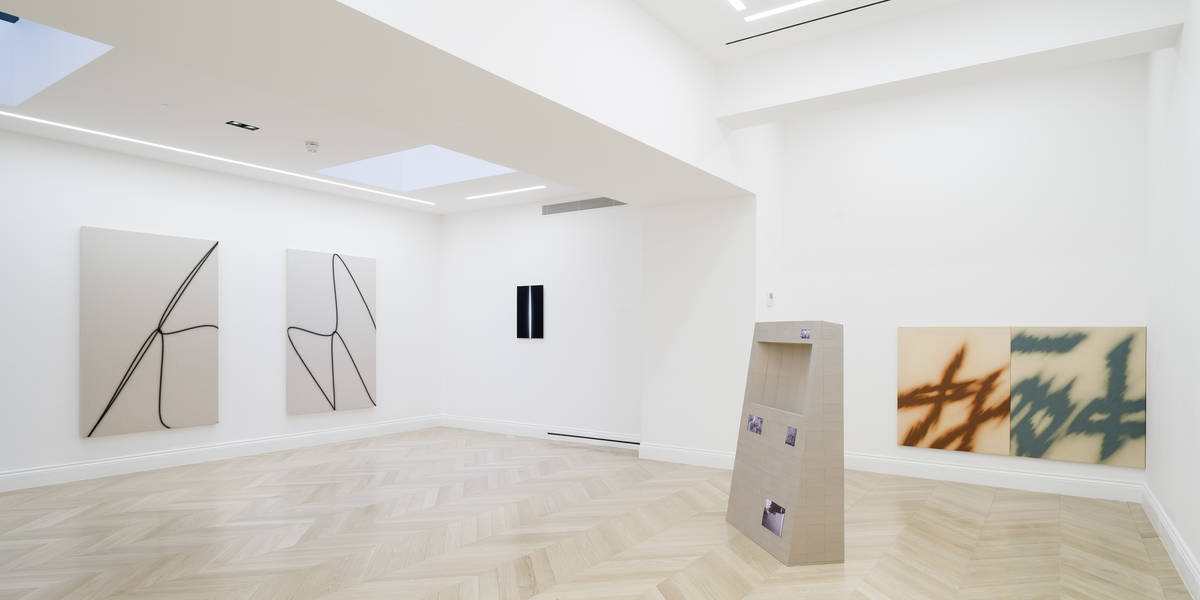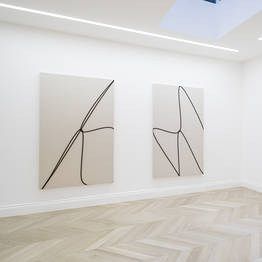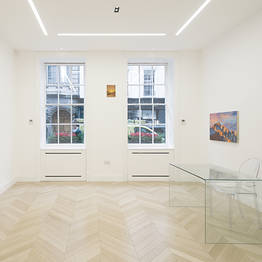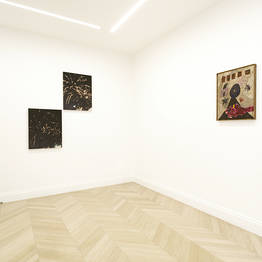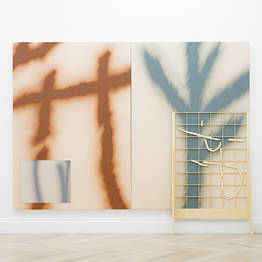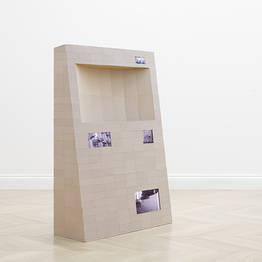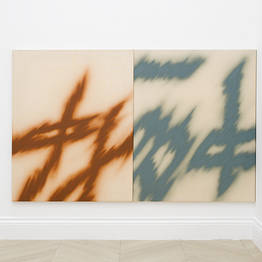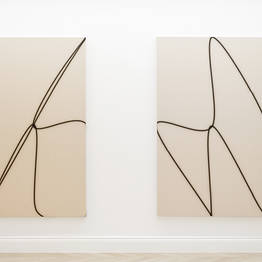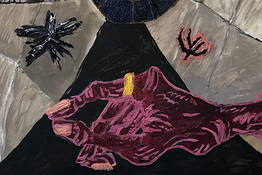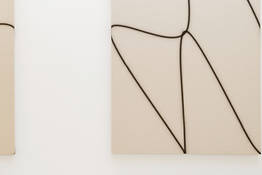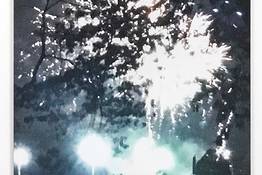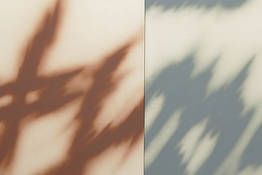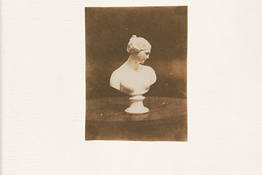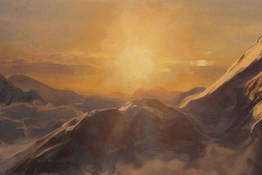Exhibition
Group Show: the form springs
3rd October - 16th November
Senesi Contemporanea’s latest show applies a broad spectrum of thought surrounding figuration and abstraction to a medley of new artists. Exploring the nuances of developing a practice around a new age of pictorial convention. This was catalysed in part by John Golding’s Path To The Absolute, published fittingly on the turn of the century in 2000, charted the relatively brief history of pictorial truth in abstract art, and in doing so presented a path to its future.
Interrogating forms of abstract art, analysis produces an acknowledgment, in which the formation of structure and shape is primarily informed by the biological physique of humanity. This understanding bred a departure, using cognition to propel from these sensibilities, ultimately creating art with ambitions of depicting forms with equilibrium and harmony outside of our native selves. This lead to a period of intense, almost surgical, disfigurations and distortions in artistic perception of the symbiosis between form and figuration. Many futurists removed corporeality, surrealists kneaded features and silhouettes, modernists experimented with its curvatures and congruency. These tendencies furthermore, led into an abyss of abstraction that questioned even the philosophical notions of the bodily self.
By exploring the gestural depths of the abstracted form, this exhibition presents nuances and extremes surrounding contemporary non-figurative painting. The distance between complete figuration and absolute abstraction is a path charted by the exhibiting artists through contemporary material processes and technique. The parameters of this path are being redefined. The viewer is invited to question how our reality, the central reference point for this path, is refused or reaffirmed through each work.
Realf Heygate explores the reality of the photographic image. His paintings identify the distance between physical compositions and their depictions. The three works presented, are hyperreal renderings of images from early pioneering photographer William Henry Fox Talbot, echoing the size of the material they were referenced from, such as a catalogue or historical text. Heygate hangs two forces in equilibrium, the history of a given image and its potential within the canon and framework of painterly technique.
Oliver Durcan’s paintings are taken from the pre-film production reel of Paramount Pictures, and the default desktop landscape for MacOSX Sierra. The hyperreal renditions of figurative images in Durcan’s work seek to appropriate and reintroduce elements of common imagery to challenge the connotations we ascribe the form of landscape. Starting from the photographic imagery, Durcan’s paintings copy an already abstracted image, a fake rendition of a landscape, purposed for branding, presenting emotional attachment to those that perhaps saw the image as commonly as the view from a home window.
Engaged in an ongoing enquiry into enlightenment, Mimi Hope’s photographs depict instances in which the artist experiences satori or awakening. Through her lens of parallel perception objects and scenery are transformed and abstracted in ways which Hope directly recreates in her practice. In Sub Zero a streak of light from a refrigerator door is isolated into a tonal abstract. In the Fireworks series, images of a Fireworks display are rendered in digital print on unprimed canvas causing the ink to bleed and evoke the intangibility of memory. In both cases the work is reactivated by the viewer’s attention, pulling both the viewer and artwork in to presence.
From pure imagination to semi-figurative, the canvas work of Stevie Dix is composed of a gestural and emotive reaction to the emptiness of the canvas. The presence of form is in direct response to the abstract. A shoe or ornamental piece, that has personal importance to Dix, float in the small sectors of abstract line and shape. Dix's work is the convergence of two layered sheets, one a classic rendition of established abstract fields, and the other the imposition of contemporary figuration. The dualism between this convergence imparts a profound sense of depth and tension.
Lucas Dupuy’s work explores semiotics and signs. His complex, yet baring paintings realise themselves in the form of abstract language. Abstract art is often separate from traditional communication, affording a certain emotional clarity, both in a sense of colour and shape, and the inflections we impose on them, which are not only the perennial foundations of language but the most emotive faculty of communication. Dupuy's dyslexia challenged his ability to articulate within the framework of language. Dyslexia abstracts the traditionally figurative form of words. To subvert this Dupuy has reconfigured the written word around his ability to communicate. The paintings are monolithic abstractions that have recalculated the purpose and form of our language.
John Golding and contemporaries championed the emotive and philosophical nature of abstraction as a human apex, thus the ability to see so much in shapes and colours that are presented so barely. The paintings of Valérian Goalec question this notion, and the nature of abstraction itself. By developing a computer algorithm that designs and executes an abstract form, he has crossed a precipice. Goalec himself as an artist automates the processes of his labour. The ramifications of this present several nuances. Is abstract thought unique to humanity? Is abstraction a faculty of emotion and furthermore does form exist completely neutral to humanity's self-image? These questions lay dormant in Goalec’s paintings, the forms presented to you are subjectively the apex of Golding’s mediation of abstract formation or the beginnings of its dereliction.
Considered in total, this exhibition is a grapple with form. Form relative to reality and abstraction is conspiratorial and elusive, it is neither completely vacant nor completely present from any form of contemporary art. In opportune and brief moments of serendipity, form reveals itself. In the presentation of contrasting approaches within art practice, Senesi Contemporanea presents a winding path from which the form springs.
Private View: October 2nd 6-9pm
Curated by Carla Schöffel, Hugo L. Bou-Assaf
Participating Artists:
Oliver Durcan
Lucas Dupuy
Stevie Dix
Valerian Goalec
Realf Heygate
Mimi Hope
